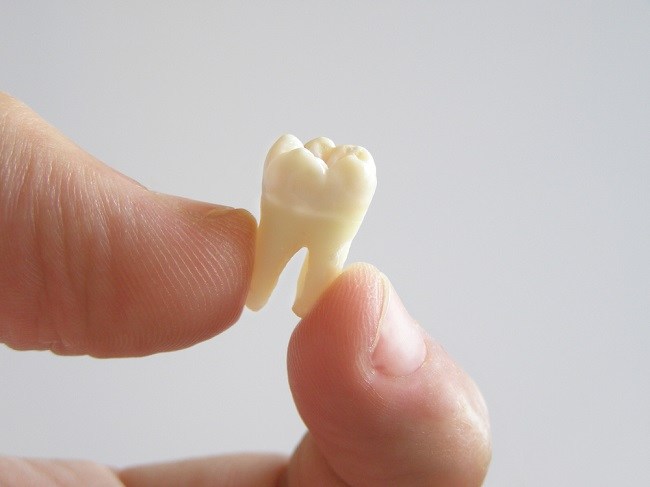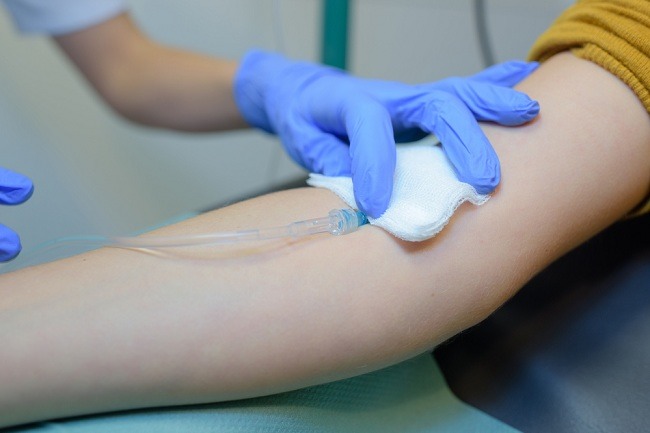In the human body, there are bundles of nerve fibers that are soft and extend from the base of the brain to the lower back. We call this part nerve spine andpposition is protected by the spine.
These spinal nerves serve to convey messages between the brain and all parts of the body. Because its function is to connect the brain and other parts of the body, injury to the spinal cord can result in impaired nerve and organ function in various parts of the body.

Impact Spinal Nerve Injury on Body
The spinal cord is not immune from injury. Injury to the spinal cord is one type of physical injury that is very serious, and the impact can be long-term.
Information from the brain to all parts of the body or vice versa, will be disrupted if there is an injury to the spinal cord. This can cause a decrease in the body's ability to move (motor) and feel (sensory), both in parts of the body or in whole.
The impact of spinal cord injury depends on the degree of damage caused. In minor injuries, disturbances in the sensory and motor nerves may not have occurred. However, in severe spinal cord injuries, nerve damage can occur which causes weakness, numbness, and paralysis of parts of the body.
Lower spinal cord injuries, for example at the chest or waist level, can cause paralysis of both legs. While spinal cord injury in the neck area, can cause paralysis in both arms and legs. In fact, if the injury hits the top of the neck, the sufferer can have difficulty breathing and require a respirator.
In addition, spinal cord injury can also cause damage to the nerves that function to regulate body functions, such as blood pressure, heart rate, and breathing. This can lead to neurogenic shock, an emergency condition that can be fatal if not treated quickly.
Signs and Symptoms of Spinal Nerve Injury
In general, the following symptoms can occur as a result of spinal cord injury:
- Numbness or tingling.
- Difficulty controlling bowel movements or urination.
- Difficulty walking.
- Loss of ability to move the legs or arms (paralysis).
- Headache.
- Fainting or unconscious.
- Symptoms of shock.
- Inappropriate head position.
- Pain, stiffness, or pressure in the neck, back, and limbs.
Symptoms of spinal cord injury depend on where the spinal cord is affected.
Causes of Injury Spinal cord
Spinal cord injuries usually occur due to an accident or violence that damages the structure of the spine. Some examples of accidents and violence that can cause these injuries are:
- Fall from a height.
- A motor vehicle accident that results in a collision to the face, neck, back, or chest.
- Injuries to the head or spine during exercise.
- A stab or shot that hits the spine.
- Plunge into shallow water with the lower body hit first.
- Twist the midsection too tight or too hard.
- Got electric shock.
In addition to physical injury, certain conditions, such as bleeding, swelling, and tumors around or within the vertebral column, can also cause spinal cord damage.
What To Do If There Is An Injury To The Spinal Nerve
If a person experiences an accident or violent attack that poses a risk of spinal cord injury, then he or she must immediately seek help by medical personnel at a hospital. Early treatment by a neurologist for this injury is expected to reduce the risk of long-term complications and minimize the risk of death.
The initial treatment that is very important for doctors is to ensure that the spinal cord injury patient's airway is safe and the patient can breathe on their own. If there are signs of difficulty breathing, the patient should receive a breathing apparatus. In addition, doctors also need to stabilize vital signs and evaluate nerve damage that occurs in patients.
Several types of drugs to relieve swelling of the nerves, such as corticosteroids including dexamethasone and methylprednisolone, may be given by doctors to patients with spinal cord injury as initial treatment. Administration of these corticosteroid drugs should be done no later than 8 hours after spinal cord injury.
Neurosurgical procedures may also be an option in certain cases of this injury. Considerations for surgery need to be adjusted to the patient's condition, as well as the severity of the degree of damage that occurs. Surgery is also an option if the spinal cord injury is caused by a tumor, or bleeding is pressing on the spinal cord.
The patient will be advised to rest completelybed rest) in the context of the recovery process. In addition, physiotherapy, occupational therapy, and rehabilitation are needed to support the healing process and prevent further damage.
What must be understood is that until now there is no treatment that can completely cure spinal cord injuries. Therefore, the best preventive measure is to always be careful when driving and prioritize safety when working, especially for field workers.









